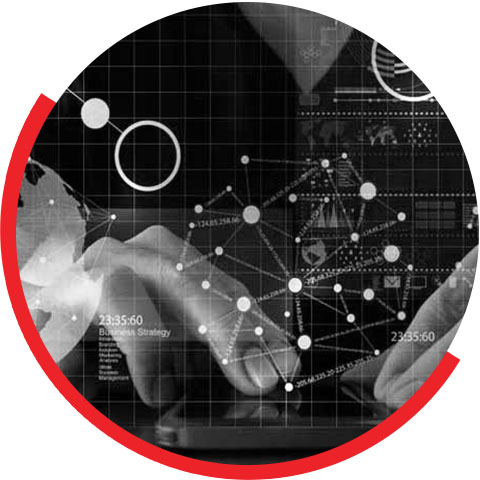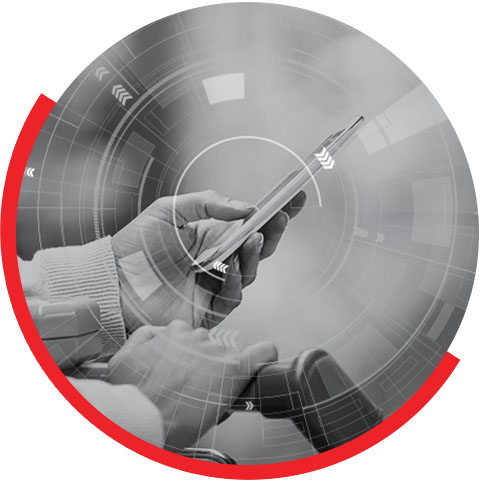As the key focus remains on digital transformation through Mobile devices, enterprises are having a hard time fulfilling business needs. Adding to this, mobile technology is fast changing, with rapid roll-outs of mobile applications becoming key for business impact realized through these technologies. Inadvertently, it is a fact that realizing digital transformation through Mobiles at an enterprise level, is still a complex and challenging process.
Major challenges include:
- Mobile Web applications lack native features, have lower response,often result in poor user experience and hence low adoption
- Developing apps for all major mobile operating systems can enhance the cost
- Server-side development which provides the foundation (data integration, authentication, offline sync, etc.) is often underrated, but is important for app performance, end-user experience/adoption, and account for 60% to 70% of the effort and expense.
A mobile application consists of two main parts. The first part is the user experience which we can call as “front-end.” This is the App UI which the users interact with.Then, there is a back-end infrastructure that hosts the logic and provides data. Most mobile applications are dependent on services such as APIs, deployment of the back-end, offline sync, user and data management, file storage, push notifications, etc.
Much of the complexity of mobile application development is in providing the back-end, owing to the heterogeneous IT landscape in a typical enterprise – either through proprietary products or bespoke applications with its own complexity in terms of integration, security, and infrastructure.
Such an IT landscape leads to building your own back-end to mobile applications using custom frameworks by leveraging multiple open source tools and plug-ins – which will eventually increase complexity and costs. These tactics - devoid of strategy - often make sense to get started cheaply, for simple applications, or for extending a web application to the mobile device. But as you realize the power of mobile applications, this can quickly become complex and costly - due to a variety of reasons, such as: data integration challenges, limited scalability, security and patchwork of custom code for integration.
Akin to web applications requiring specific architecture to handle the demands of web-based applications, mobile applications also require a specific architectural pattern. These include: mobile-optimized system integration and data transformation, multi factor authentication, off-line sync, notification, etc., application development architecture for efficient code reusability and maintenance, built-in security, user management, analytics and SDK-level integration to major native mobile OSs like iOS, Android and Windows.
A typical MBaaS addresses all the challenges mentioned above, by seamlessly integrating all the capabilities a development team needs to build, secure, and manage their application resulting in a faster, more efficient development process. So instead of setting up a database, push-notification server and user-management system, which you would have to manage, opting for an MBaaS platform helps cater to all these out-of-the box.
MBaaS empowers developers by completely abstracting the back-end infrastructure which in turn lets them focus on delivering better user experiences instead of dealing with complex integrations.
In the absence of an MBaaS platform, all that is required for “back-end,”must be custom built. What needs to be custom built will depend on the complexity of your app idea. As you can visualize, there are quite a lot of things you will need to take care of, before you even start working on the app itself.
Also, if you plan for more than one application as part of your strategy, there will be a need to reuse many of the above custom built back-end services – especially notification, off-line sync, integration to different systems, etc.
Using MBaaS, you will be able to setup the back-end integrations with zero to minimum code, and concentrate more on the UI/UX frond-end which matters the most, and reuse the setup for future applications
- To summarize, here are the major advantages MBaaS provides:
- Faster time-to-market: Minimizes the operations overhead and reduces difficulties in deploying the mobile applications on Cloud
- Improved efficiency: Reduces the back-end system development time & costs (including maintenance cost)
- Security and Scalability: It provides an infrastructure package that deals with security, performance, scalability, and other operational headaches
- Reusability: Reuse most of what is set up for the first application, across other applications – providing 40-50% reusability
Mobility is a core element in modern business which is necessary to remain relevant and competitive. And yet many businesses are still struggling to keep up. The quality of both web and mobile apps depend on budget, skill set, and end-user requirements. Initial attempts at a mobile presence have fallen short of both business and customer expectations for many enterprises. MBaaS is the solution to this dilemma. It addresses primarily the server-side development and challenges of building apps for driving a competitive business. Add to that, the Analytics and user management and it’s evident why finding the right MBaaS solution is so important to any Company’s mobile strategy.









